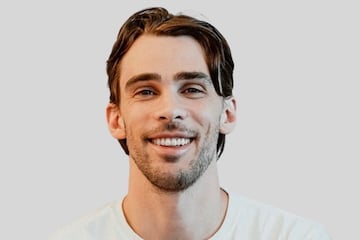AI Won’t Replace Creativity, Says Studio Founder

Matthew Gattozzi realizes creativity and efficiency often conflict. His firm, Goodo Studios, produces commercial content that attracts visitors and converts them into customers. It’s a creative process with time and budget constraints.
“It’s a balancing act,” he told me. “On the one hand, you need efficiency. On the other, creativity requires time and space to flourish.”
A former ballet dancer, Matthew first appeared on the podcast in 2021. In our recent conversation, he shared his firm’s content-creation strategy, client needs, and, yes, the impact of AI.
The entire audio of our conversation is embedded below. The transcript is edited for length and clarity.
Eric Bandholz: Give us a quick rundown of what you do.
Matthew Gattozzi: I’m the founder of Goodo Studios, an agency that creates content to convert viewers into customers. We handle everything from photos and videos to advertising strategies across most platforms, including TikTok, Meta, and YouTube. We aim to understand who your customers are and why they buy and ensure the content speaks to them, ultimately driving revenue.
Businesses often chase trends, but we focus on core principles. User-generated and creator content has been popular for years, but we’re moving away from that a bit. I expect more brands will shift toward producing top-of-funnel content that’s engaging and shareable. The winning brands understand advertising fundamentals and ensure their content matches the medium rather than jumping from trend to trend.
Bandholz: What does content production look like?
Gattozzi: Traditional production often separates strategy from the creative process, which is a big mistake. In today’s environment, strategy and production need to be intertwined. We start with a creative strategy to figure out who your customers are and why they’re buying. There must be a clear reason behind every piece of content you create.
From there, we plan the shots to minor details, whether video, photo, or ad content. We source the right talent, location, and props. By the time shoot day arrives, the planning makes the execution much more manageable. Post-production, such as editing, becomes smoother with proper planning. Depending on the available resources, you can approach this at any scale, but the steps remain consistent. The key is that strategy and production are now more integrated than ever.
Bandholz: How long does it take?
Gattozzi: It’s a balancing act. On the one hand, you need efficiency. On the other, creativity requires time and space to flourish. The rise of AI has brought a focus on efficiency and volume, but sometimes, the best ideas come from taking time to be creative, even in moments of boredom or inefficiency.
As a leader, I often navigate this tension between getting things done quickly and allowing space for creativity. You can easily produce several decent scripts in a day, but sometimes it’s worth spending more time to develop one great idea. That’s where the magic happens. The challenge is balancing efficient production and letting creative ideas marinate. Often, the best content comes from exploring those inefficiencies.
Bandholz: What’s your initial strategy with clients?
Gattozzi: It depends on the brand’s stage and resources. For early-stage companies, establishing product-market fit is about testing many messages. Those companies should create more content, take multiple shots, and learn what works. Investing in a single, high-budget video at this stage could be risky.
As a company grows, what got them initial success may not be enough to reach the next level. Their content approach needs to evolve. Once they have a solid product-market fit, brands can take more significant swings with more ambitious content to reach new audiences. That’s where we come in. We offer creative diversity once a brand has validated its product and message.
Smaller, creator-driven content still has value, but the production limits of shooting with just a phone or on a tight budget constrain creativity. With higher-end production, your possibilities are endless. You can execute almost any idea when you have the right equipment, team, and budget, which we specialize in.
Bandholz: Do you create organic content for social media?
Gattozzi: We do a bit, but it’s not our primary focus. Most clients come to us for customer acquisition and seek new ways to engage audiences. Once it finds its initial product-market fit, a brand needs to scale and reach broader audiences. That’s where we come in, helping brands build the right messaging to grow. We’ll work with in-house marketing teams to help them get that next level of traction.
Bandholz: What content trends should merchants be aware of in 2025?
Gattozzi: AI is a hot topic, and there’s a lot of buzz around it. My advice is to be cautious and purposeful with its use. There’s no need to rush to adopt the latest AI tool because it’s trendy. Focus on tools that genuinely help enhance creativity and communication.
AI is already part of our daily lives, and while it’s a powerful tool, it’s not magic. A good ad won’t succeed because it uses AI. The technology should support the creative process, not replace it. Use the tools that fit your goals and push your ideas further.
The excitement about AI should be balanced with practicality. Use it to elevate creative output without sacrificing the human connection that resonates with audiences.
Bandholz: Where can people follow you, get in touch?
Gattozzi: Our site is GoodoStudios.com. We’re also on YouTube. I’m on X, LinkedIn, Instagram, and TikTok.








